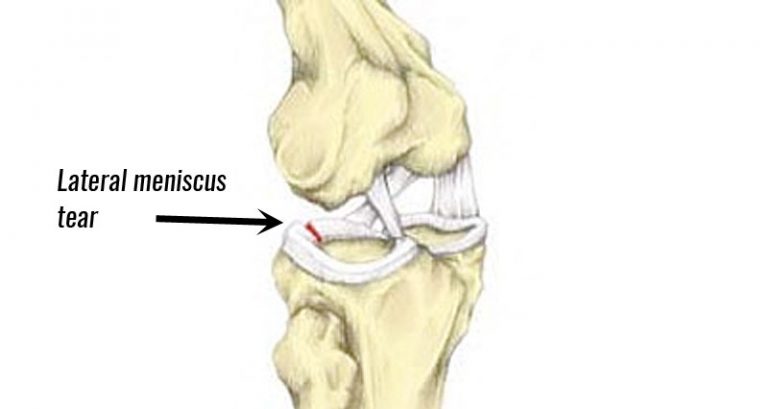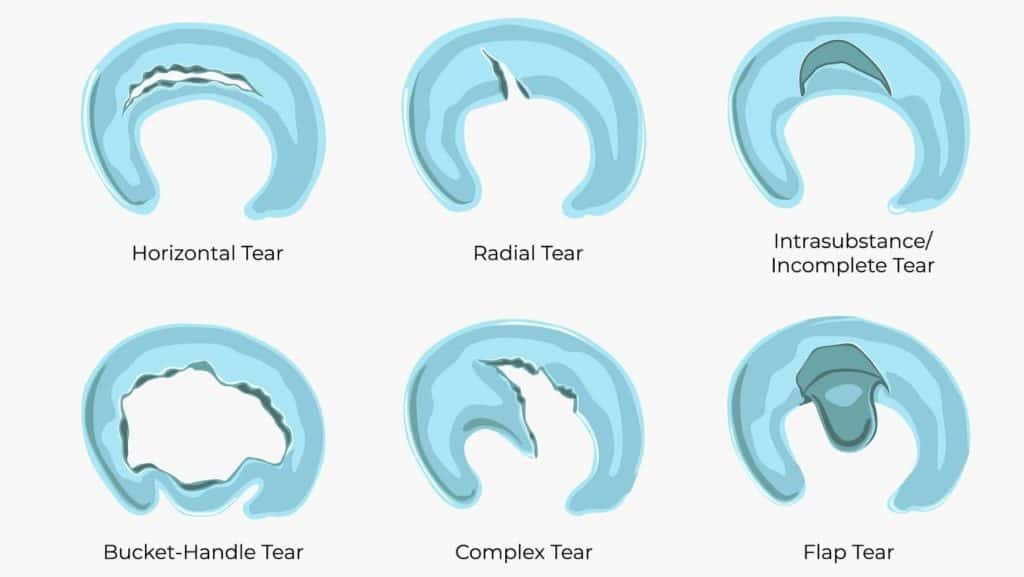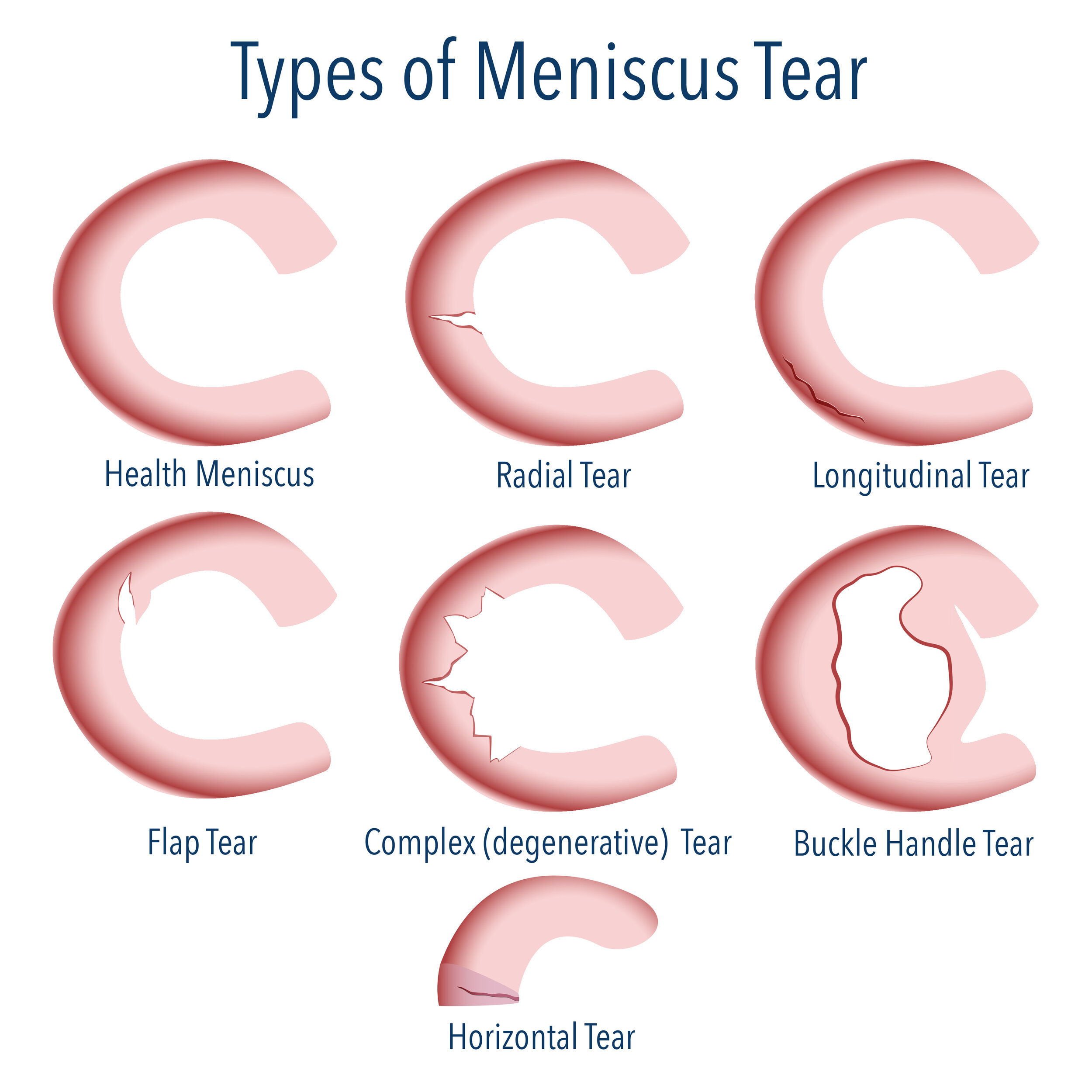Anatomy and Function of the Meniscus

The meniscus is a C-shaped piece of cartilage that acts as a shock absorber and stabilizer within the knee joint. It sits between the thighbone (femur) and the shinbone (tibia), providing crucial support and cushioning during movement.
Location and Structure
The meniscus is located in the knee joint, specifically between the femur and the tibia. It’s made up of a tough, rubbery type of cartilage called fibrocartilage, which is different from the smooth hyaline cartilage found in other joints. The meniscus is composed of two distinct parts: the medial meniscus, located on the inner side of the knee, and the lateral meniscus, found on the outer side. Both menisci are crescent-shaped and have a thicker outer rim and a thinner inner edge.
Role of the Meniscus
The meniscus plays a vital role in the proper functioning of the knee joint. Its primary functions include:
- Shock Absorption: The meniscus acts as a cushion, absorbing forces and distributing weight evenly across the knee joint, protecting the underlying cartilage from excessive wear and tear.
- Joint Stability: The meniscus helps stabilize the knee joint by providing a tight fit between the femur and tibia, preventing excessive movement and reducing the risk of instability.
- Load Distribution: The meniscus distributes the load placed on the knee joint more evenly, reducing the stress on the articular cartilage and preventing premature wear and tear.
Types of Menisci
The two menisci in the knee have unique features that contribute to their specific functions:
- Medial Meniscus: The medial meniscus is C-shaped and attached to the medial collateral ligament (MCL), which helps stabilize the knee joint. It is more prone to injury than the lateral meniscus due to its tighter attachment and limited mobility.
- Lateral Meniscus: The lateral meniscus is more O-shaped and is less firmly attached to the surrounding structures, allowing for greater mobility. This makes it slightly less susceptible to injury compared to the medial meniscus.
Blood Supply, Meniscus tear
The blood supply to the meniscus is limited, especially in the inner region, known as the “inner zone.” The outer rim of the meniscus, called the “outer zone,” receives a better blood supply. This difference in blood supply has significant implications for healing:
- Outer Zone: Tears in the outer zone of the meniscus, where blood supply is adequate, have a better chance of healing naturally.
- Inner Zone: Tears in the inner zone, where blood supply is poor, are less likely to heal on their own and may require surgical intervention.
Types and Causes of Meniscus Tears

The meniscus, a C-shaped piece of cartilage in the knee, acts as a shock absorber and helps distribute weight evenly. Tears in the meniscus are common injuries, particularly among athletes. These tears can occur in various ways, and understanding the different types and their causes is crucial for proper diagnosis and treatment.
Types of Meniscus Tears
Meniscus tears are categorized based on their location, shape, and severity.
- Horizontal Tear: This type of tear runs across the width of the meniscus.
- Vertical Tear: A vertical tear extends from the top to the bottom of the meniscus, and can be further classified as radial, longitudinal, or oblique.
- Flapped Tear: A portion of the meniscus is completely detached, creating a flap of cartilage.
- Degenerative Tear: These tears occur due to wear and tear over time, and are more common in older individuals.
- Complex Tear: This refers to a combination of different types of tears, such as a horizontal tear combined with a vertical tear.
Causes of Meniscus Tears
Meniscus tears are often caused by sudden twisting or pivoting movements, especially when the knee is flexed.
- Sports Injuries: Athletes involved in activities like football, basketball, and skiing are particularly susceptible to meniscus tears due to the high impact and twisting motions involved.
- Degenerative Changes: As we age, the meniscus can wear down, making it more prone to tears. This is often associated with osteoarthritis.
- Trauma: A direct blow to the knee, such as a car accident or a fall, can also cause a meniscus tear.
Mechanisms of Injury
The mechanism of injury for a meniscus tear depends on the type of tear and the force applied.
- Twisting Injury: A common mechanism for a vertical tear is a sudden twisting motion while the foot is planted, often during sports activities. The meniscus is torn as the femur (thigh bone) rotates on the tibia (shin bone).
- Direct Impact: A direct blow to the knee, such as a fall or a car accident, can cause a horizontal tear or a flap tear.
- Degenerative Changes: In individuals with pre-existing degenerative changes in the meniscus, even minor forces or activities can cause a tear.
Symptoms of Meniscus Tears
The symptoms of a meniscus tear can vary depending on the severity of the tear and the individual’s overall health.
| Type of Tear | Symptoms |
|---|---|
| Horizontal Tear | Pain, swelling, and stiffness in the knee. Difficulty extending the knee. |
| Vertical Tear | Pain, swelling, and a clicking or popping sensation in the knee. Difficulty extending the knee. Locking of the knee, where it gets stuck in a bent position. |
| Flapped Tear | Severe pain, swelling, and instability in the knee. Difficulty bearing weight on the affected leg. |
| Degenerative Tear | Gradual onset of pain, stiffness, and swelling in the knee. Pain may be worse after activity. |
| Complex Tear | A combination of symptoms, depending on the types of tears involved. |
Diagnosis and Treatment Options

Diagnosing and treating a meniscus tear involves a comprehensive approach, considering the severity of the tear, patient factors, and available treatment options.
Diagnostic Methods
Diagnosing a meniscus tear typically involves a combination of physical examination, imaging studies, and, in some cases, arthroscopy.
- Physical Examination: A thorough physical examination is crucial for diagnosing a meniscus tear. The doctor will assess your knee’s range of motion, stability, and tenderness. They will also perform specific tests to check for joint locking, clicking, and pain with certain movements. For instance, the McMurray test involves flexing and rotating the knee to assess for a click or pop, which can indicate a meniscus tear.
- Imaging Studies: Imaging studies, such as X-rays, MRI, and ultrasound, can provide valuable information about the structure and integrity of the meniscus. X-rays can rule out other conditions, such as fractures, while MRI scans offer detailed images of the meniscus, revealing the location, size, and type of tear. Ultrasound imaging can also be used to visualize the meniscus, although it is less commonly used than MRI.
- Arthroscopy: Arthroscopy is a minimally invasive surgical procedure that allows doctors to directly visualize the inside of the knee joint. It involves inserting a small camera and surgical instruments into the joint through small incisions. Arthroscopy is often used to confirm the diagnosis of a meniscus tear, assess the severity of the tear, and perform surgical repairs or removal of damaged tissue.
Treatment Options
Treatment options for meniscus tears vary depending on the severity of the tear, patient age, activity level, and overall knee health.
- Conservative Treatment: Conservative treatment options are often the first line of treatment for meniscus tears, especially for less severe tears. These options aim to reduce pain, inflammation, and improve knee function.
- RICE: RICE (Rest, Ice, Compression, and Elevation) is a common treatment approach for acute injuries. Resting the knee, applying ice to reduce swelling, using compression bandages to minimize inflammation, and keeping the leg elevated can help manage pain and promote healing.
- Pain Medications: Over-the-counter pain relievers, such as ibuprofen or acetaminophen, can help reduce pain and inflammation. In some cases, stronger pain medications may be prescribed.
- Physical Therapy: Physical therapy plays a crucial role in rehabilitation after a meniscus tear. A physical therapist can teach you exercises to strengthen the muscles around the knee, improve flexibility, and restore range of motion. They can also provide guidance on proper biomechanics and functional activities.
- Surgical Interventions: Surgical interventions are often considered for meniscus tears that cause significant pain, instability, or functional limitations. These interventions can be performed arthroscopically, minimizing the need for large incisions.
- Meniscectomy: This procedure involves surgically removing the torn portion of the meniscus. It is often used for tears that are too large or complex to repair.
- Meniscus Repair: This procedure involves suturing the torn meniscus back together. It is often considered for younger patients with stable tears and good blood supply to the meniscus.
Factors Influencing Treatment Choice
The choice of treatment for a meniscus tear depends on several factors, including:
- Severity of the Tear: The size, location, and type of the tear significantly influence treatment decisions. Smaller, less complex tears may be managed conservatively, while larger or more complex tears may require surgery.
- Patient Age: Younger patients with good blood supply to the meniscus are more likely to benefit from meniscus repair. Older patients, whose menisci may have already undergone some degeneration, may be better candidates for meniscectomy.
- Activity Level: Patients who are very active or participate in high-impact sports may require more aggressive treatment, such as surgery, to restore function and prevent further injury.
- Overall Knee Health: The presence of other knee conditions, such as osteoarthritis, can influence treatment decisions. For example, patients with osteoarthritis may be more likely to undergo meniscectomy, as repair may not be feasible.
Comparison of Treatment Options
| Treatment Option | Advantages | Disadvantages |
|---|---|---|
| Conservative Treatment (RICE, pain medications, physical therapy) | Non-invasive, minimal risks, can be effective for less severe tears, allows for natural healing | May not be effective for all tears, can take longer to recover, may not fully restore function |
| Meniscectomy | Effective for removing damaged tissue, can relieve pain and improve function, minimally invasive procedure | Can increase the risk of osteoarthritis, may not fully restore knee stability, may require longer rehabilitation |
| Meniscus Repair | Preserves meniscus tissue, may help prevent future osteoarthritis, can provide good long-term results | Not suitable for all tears, may require longer recovery time, can be more complex than meniscectomy |
A meniscus tear, a common sports injury, can sideline athletes for weeks or even months. The severity of the injury can vary, as seen in the jj mcarthy injury , which required surgery and a lengthy recovery period. While the meniscus is a resilient structure, a tear can significantly impact athletic performance and require careful management for a full return to activity.
A meniscus tear, a common sports injury, can be debilitating, requiring surgery and lengthy rehabilitation. The severity of such an injury was highlighted in the jj mccarthy knee injury , which significantly impacted his performance and the Michigan Wolverines’ season.
While the meniscus is a resilient structure, its damage can significantly impact athletic performance and necessitate a careful recovery process.
